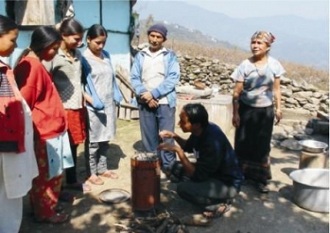Use of Biomass Briquettes: Its Effect on Indoor Air Pollution and on Pneumococcal Nasopharyngeal Carriage. A Randomized Clinical Trial – Source: ClinicalTrialsFeeds.org
Verified by: Medical Research Council Unit, The Gambia, August 2012
First Received: May 18, 2012 | Last Updated: August 6, 2012
Phase: N/A | Start Date: January 2012
Overall Status: Active, not recruiting | Estimated Enrollment: 500
Personal exposure to Indoor Air Pollution (IAP) is a known risk factor of severe pneumonia, which is the number one killer of children under five in developing countries. The main source of IAP in developing countries is cooking fires, with an estimated 3 billion people still reliant on biomass stoves for their daily cooking. This study will test the effectiveness of an intervention aimed to reduce IAP, as well as help to quantify the relationship between exposure (IAP) and infection (pneumococcal carriage).
In Phase I (adjunct pilot study L2010.99), 3 fuels and 5 stoves were tested to measure harmful pollutant emissions. The preliminary results showed that the largest difference was found in the fuels (briquettes cleaner than wood), with a smaller difference found between a couple of the improved stoves and the traditional 3-stone. Re-testing of selected stove/fuel combinations to confirm findings has just been completed. Phase II (this proposal) will test the biomass briquettes in a randomized clinical trial to measure actual IAP reductions in households. A proof of concept pneumococcal survey will also be conducted as a secondary study to see whether reduced exposure to IAP affects pneumococcal carriage in babies and mothers




